Agra, known for its rich Mughal history, is home to several fascinating museums that showcase its cultural and historical heritage. The Taj Museum, located within the Taj Mahal complex, offers insight into the monument’s construction and Mughal artefacts. The Agra Fort Museum displays a collection of Mughal weapons, paintings, and manuscripts. One of the famous Agra museums is the Spiritual Museum at the ISKCON temple. These museums provide visitors with a deeper understanding of Agra’s legacy, beyond its famous landmarks like the Taj Mahal and Agra Fort.
Top 10 Agra Museums
Listed below are the must-visit Agra museums. Each museum provides unique insights, from the Mughal era to modern craftsmanship and spiritual philosophies.
1. Taj Museum
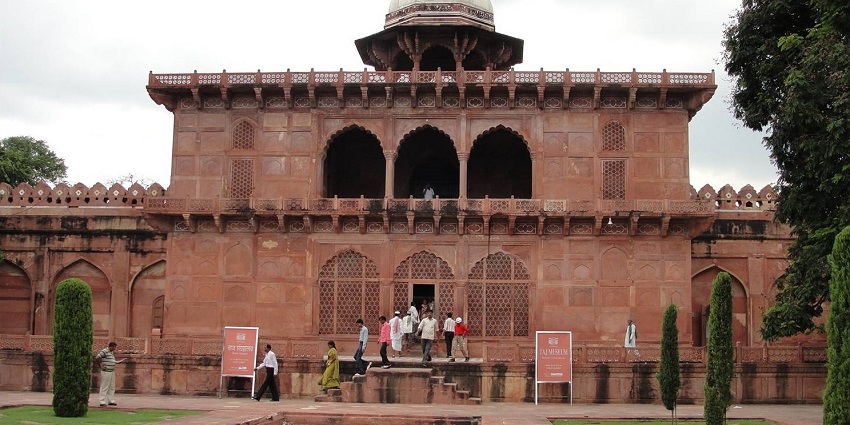
Photo: Sanjeev284 / Wikimedia Commons
Situated within the Taj Mahal complex, the Taj Museum showcases the intricate history of one of the world’s most famous monuments. Opened in 1982, it houses Mughal-era artefacts, such as miniature paintings, ancient coins, and architectural drawings of the Taj Mahal. Visitors can also explore the personal items of Emperor Shah Jahan and his beloved wife Mumtaz Mahal. The museum gives a deep insight into the construction and significance of the Taj, making it a vital stop for those looking to appreciate its rich history and architectural marvel.
Timings: 10 AM to 5 PM, closed on Fridays
Entry Fee: ₹20 for Indian citizens and ₹750 for foreign tourists
Suggested Read: Places To Visit In Naimisharanya For A Scenic Retreat
2. Agra Fort Museum
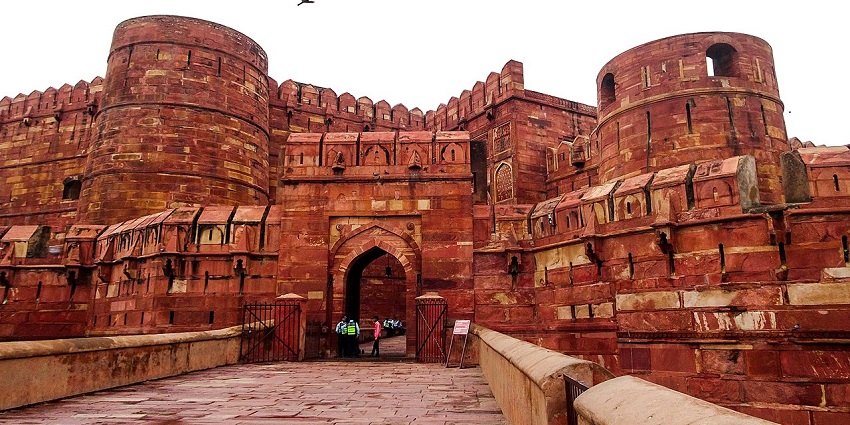
Photo: Avijitdphy3 / Wikimedia Commons
This museum is located within the majestic Agra Fort and offers a glimpse into the Mughal Empire’s military and cultural past. The Agra Fort Museum features a collection of Mughal-era weapons, armour, war instruments, and exquisite miniature paintings, manuscripts, and decorative items. The exhibits help visitors understand the daily life and opulence of the Mughal court. Set against the backdrop of the UNESCO World Heritage Site, the museum adds depth to the experience of visiting the fort by blending history with art and warfare.
Timings: 6 AM to 6 PM
Entry Fee: ₹50 for Indian citizens and ₹650 for foreign tourists
3. Spiritual Museum (ISKCON)
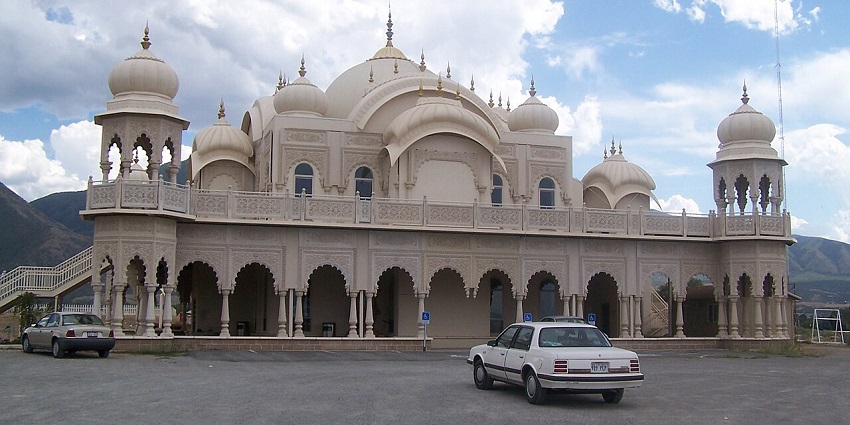
Photo: Kasiarunachalam / Wikimedia Commons / Image For Representation Only
Housed within the ISKCON temple, the Spiritual Museum in Agra delves into the region’s deep spiritual traditions and philosophies. The museum primarily focuses on the teachings of the Bhagavad Gita, offering exhibits that explain ancient Hindu texts and practices. Visitors can explore models, paintings, and multimedia displays that describe the life and mission of Krishna, as well as the larger Hindu philosophy. This museum provides an introspective journey for those seeking spiritual enlightenment while exploring Agra’s spiritual significance beyond its architectural wonders.
Timings: 10 AM to 5 PM
Entry Fee: Free entry
Suggested Read: The Wonder Of Kanpur Zoo
4. Chini Ka Rauza Museum
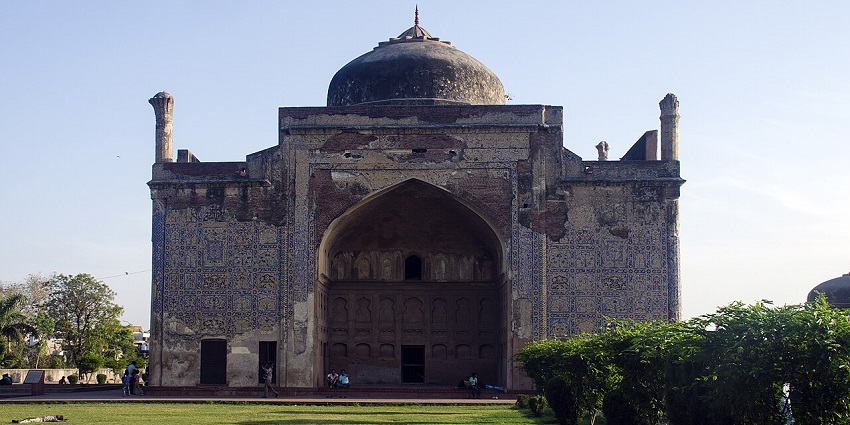
Photo: Rangan Datta Wiki / Wikimedia Commons
Chini Ka Rauza Museum is near the Chini Ka Rauza monument, a lesser-known yet beautiful tomb from the Mughal era. The museum preserves Persian and Mughal artefacts, focusing on Persian art and architecture, reflecting the influence of Persian culture on the Mughal dynasty. It houses tiles, pottery, and other items featuring intricate Persian craftsmanship, giving visitors a rare view into the cultural fusion that characterised Mughal art. The museum complements the visit to the mausoleum with rich historical context about Persian and Mughal interactions.
Timings: Sunrise to Sunset
Entry Fee: Free
5. St. John’s College Museum
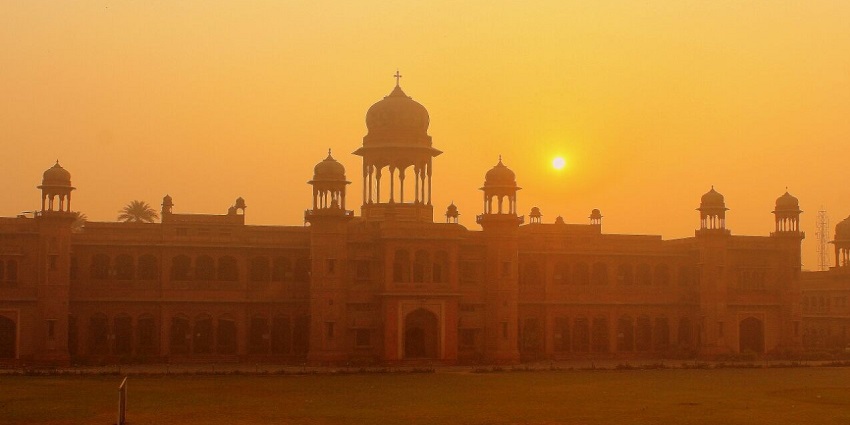
Photo: Vineet11james / Wikimedia Commons
Located on the historic St. John’s College campus, this museum offers an eclectic mix of artefacts, including ancient sculptures, rare coins, and manuscripts. Its collection highlights India’s rich cultural past, emphasizing items from the Mughal period and early Indian history. The museum also features paintings, photographs, and fossils, giving visitors a holistic understanding of Agra’s history and the region’s importance in Indian civilization. This institution is a great stop for history buffs who want to explore the educational heritage and historical artefacts of Agra.
Timings: 9 AM to 5 PM (Monday to Friday)
Entry Fee: Free entry
Suggested Read: Lucknow Zoo Museum
6. Shilpgram Museum
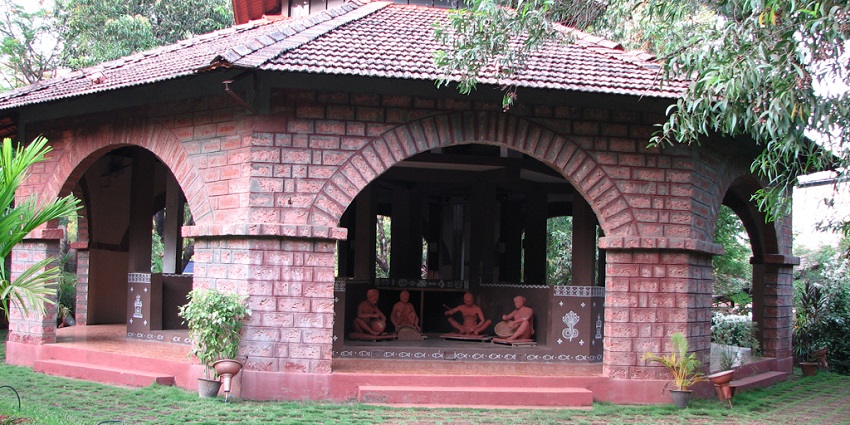
Photo: Nilesh2 str / Wikimedia Commons
Shilpgram Museum celebrates India’s traditional arts and crafts, particularly from the regions surrounding Agra. The museum is part of a larger handicrafts village that showcases local artisans’ work, including pottery, textiles, and handcrafted jewellery. Visitors can explore exhibits detailing the history and techniques behind these crafts, often with live demonstrations by the artisans themselves. Shilpgram serves as a cultural centre, promoting and preserving India’s rural craftsmanship and offering a unique experience for tourists looking to buy authentic handmade goods while learning about their historical roots.
Timings: 10 AM to 7 PM
Entry Fee: ₹30 for Indian citizens and ₹80 for foreigners
7. Dayalbagh Museum
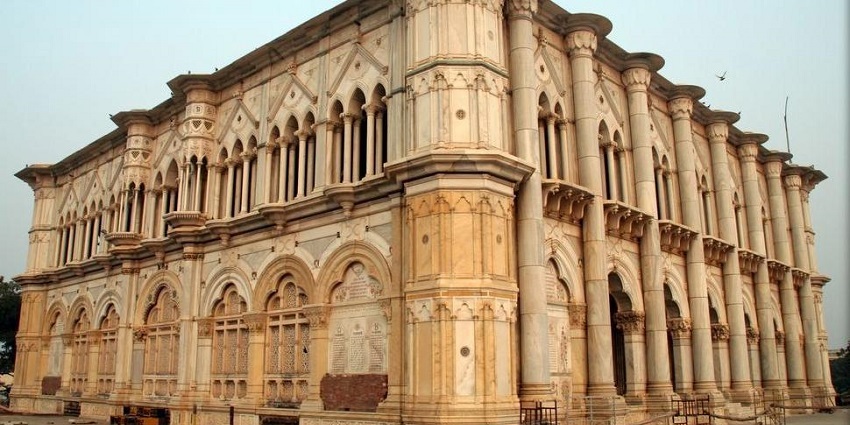
Photo: Isewell / Wikimedia Commons
The Dayalbagh Museum is located within the sprawling Dayalbagh colony, which is the headquarters of the Radhasoami faith. This museum offers insights into the religious and philosophical teachings of the Radhasoami movement, which emphasises spiritual progress through personal discipline and selfless service. The exhibits include manuscripts, photographs, and religious artefacts that trace the origins and development of the faith. Visitors can also learn about the Dayalbagh community’s contributions to education, science, and social service, making it an enriching stop for those interested in spiritual and community life in Agra.
Timings: 10 AM to 4 PM
Entry Fee: Free Entry
Suggested Read: Places To Visit In Govardhan For A Spiritual Expedition In Uttar Pradesh
8. Railway Museum
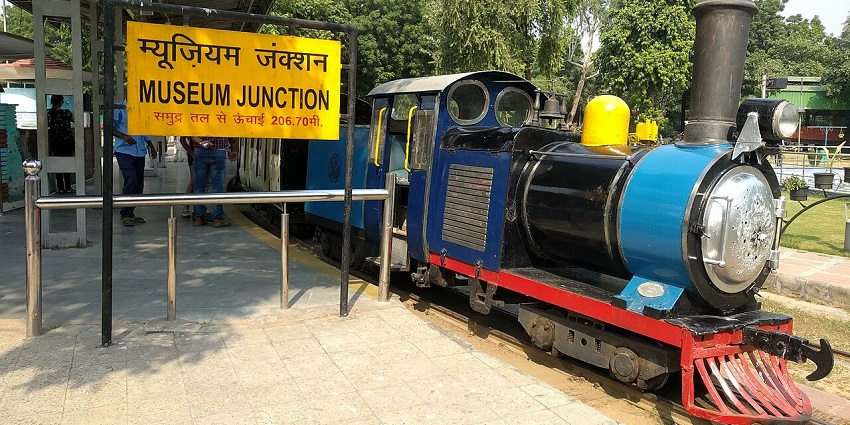
Photo: Pulakit Singh / Wikimedia Commons
The Railway Museum in Agra highlights the history of India’s railway system, particularly its development during the British colonial period. The museum showcases old locomotives, railway carriages, and related equipment, tracing the evolution of the railways in India from the 19th century to the present day. Exhibits include miniature models of trains, photographs, and documents explaining the engineering marvels of the time. It’s a must-visit for train enthusiasts and history lovers, offering a unique perspective on how railways transformed travel and trade in India.
Timings: 10 AM to 5 PM
Entry Fee: ₹50 for Indian citizens and ₹100 for foreigners
9. Swami Bagh Museum
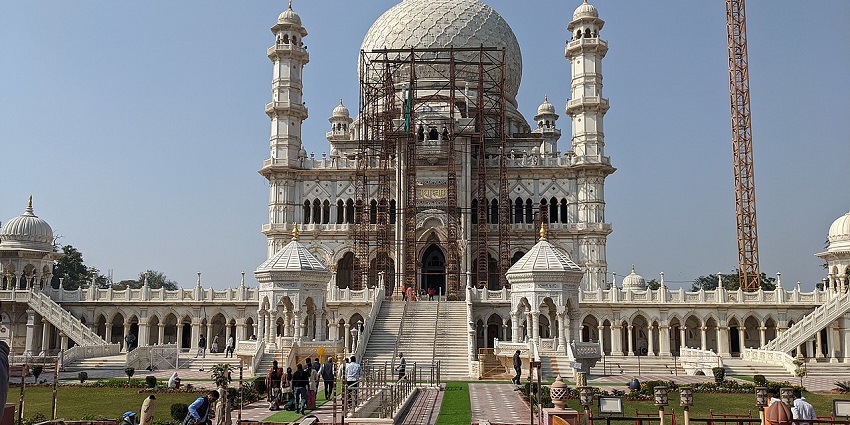
Photo: VibrantVivek / Wikimedia Commons
Located within the Swami Bagh Temple complex, this museum focuses on the spiritual heritage of the Radhasoami faith. It houses artefacts related to the religious history and philosophy of the movement, including manuscripts, ceremonial objects, and photographs of spiritual leaders. The museum provides a deep dive into the teachings of Radhasoami, a spiritual movement that originated in the 19th century. For visitors interested in spirituality and religious movements, the Swami Bagh Museum offers an opportunity to understand a less mainstream but significant aspect of Agra’s religious landscape.
Timings: 8 AM to 5 PM
Entry Fee: Free entry
Suggested Read: Things To Do In Saharanpur For A Distinctive Experience
10. Anguri Bagh Museum
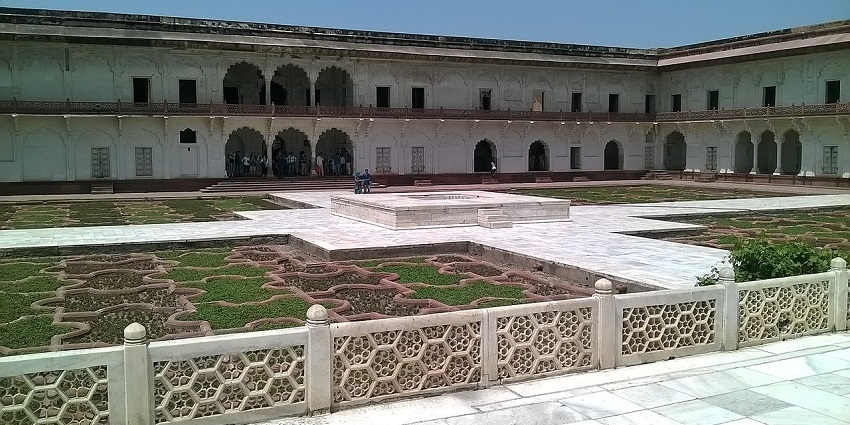
Photo: N.AMIRTHA / Wikimedia Commons
Set within the historical Anguri Bagh gardens in Agra, this museum preserves Mughal-era artefacts, particularly related to the architectural and horticultural achievements of the Mughal dynasty. The museum offers displays on the gardens themselves, along with the fountains, pools, and pavilions that exemplify Mughal landscape design. Visitors can explore the artefacts related to garden design, water management systems, and decorative elements that were central to Mughal aesthetic principles. The museum provides a peaceful and informative escape, offering insights into how the Mughal emperors combined beauty with functionality in their royal gardens.
Timings: Sunrise to Sunset
Entry Fee: Included with Agra Fort entry fee (₹50 for Indian citizens, ₹650 for foreign tourists)
Agra museums offer a diverse range of experiences, from exploring the grandeur of the Mughal era to understanding local crafts and spirituality. Each museum presents a unique aspect of the city’s heritage, such as the Taj Museum, which delves into the Taj Mahal’s history, or the Railway Museum, showcasing India’s railway legacy. Whether it’s Mughal art at Chini Ka Rauza or spiritual insights at Dayalbagh, these museums highlight the multifaceted history and culture of Agra. Book a trip with TripXL to immerse in the museum experience.
Cover Photo: hulkiokantabak / Pixabay / Image For Representation Only


 WhatsApp
WhatsApp
 Twitter
Twitter









